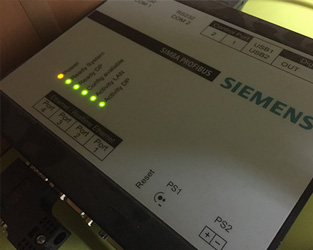System Testing
We believe that the development and testing of control software is key to the successful implementation of a project. To achieve comprehensively tested systems we have championed the use of simulation techniques for many years.
Well tested control PLC code and SCADA configurations have the following advantages:
- Reduced commissioning time and costs.
- Control system optimised prior to delivery to site reducing site modifications and down time.
- High Levels of Confidence in the Control Software.
- The SCADA and HMI can be a proven aid in the commissioning of the process from an early stage of plant commissioning.
- Reduced snags and latent defects in the control system.
The simulation also provides the following benefits:
- Earlier release of the Electrical Panel to site.
- Controlled test conditions with simulated access to all instruments and equipment.
- Excellent training tools to demonstrate the system to the end user/operations.
MCC Panel Tests
We usually attend the MCC and C&I panel tests to exercise all the equipment and control system Input and Output signals. This ensures that the electrical panel has been correctly wired and it correctly reflects the I/O schedule.
Once all parties are content that the Electrical Panels have been correctly manufactured they can be released to site for installation. Full sequence testing of the control system is not required at this stage. This approach ensures that the time spent at the MCC manufacturer is minimised, which results in reduced costs and improved delivery times.
Once the MCC is released, the PLC processor, communications cards and HMI units are usually retained to make up a test network at our offices. The simulated network is configured using a combination of the contract and test equipment along with a simulation workstation.
Testing Environment
The simulation system consists of a workstation running a SCADA/communications package which we will develop to provide equipment feedback, allow instrument values to be set, initiate trip conditions and provide simple process simulation. The simulation workstation is an engineering tool which we have developed with standard functions to simulate fixed and variable speed drives, valves and analogue/digital instrumentation. The simulation provides a graphical interface for the test engineer to carry out control sequence tests.
The control network including all the PLCs, HMIs and SCADA system is configured to accurately reflect the designed network.
The control system is tested against an approved Test Plan (derived from the FDS). The control and simulation system provides a stable environment in which to conduct the tests. The control sequences are tested under normal and abnormal conditions. Times and process instruments can be modified to allow efficient use of the test engineers time. Tests can be repeated and external influences controlled to ensure each aspect of the control sequence and interlocks can be tested and proven.
These methods of testing and simulation produce proven control software which will work first time when installed on site, thereby reducing timescales and costs.




